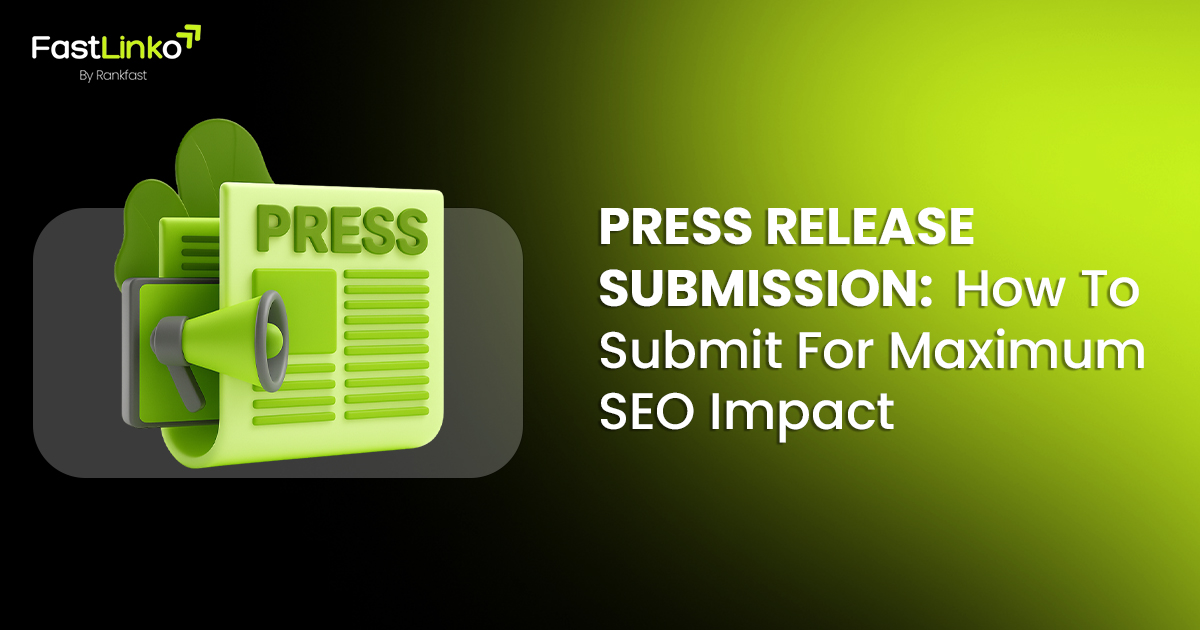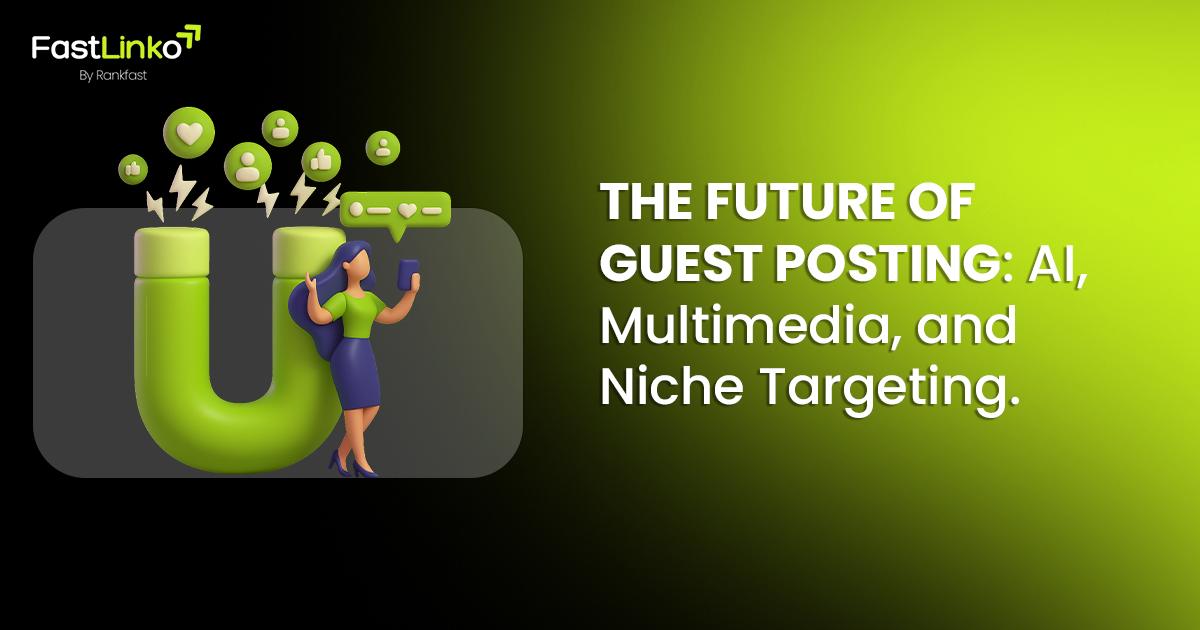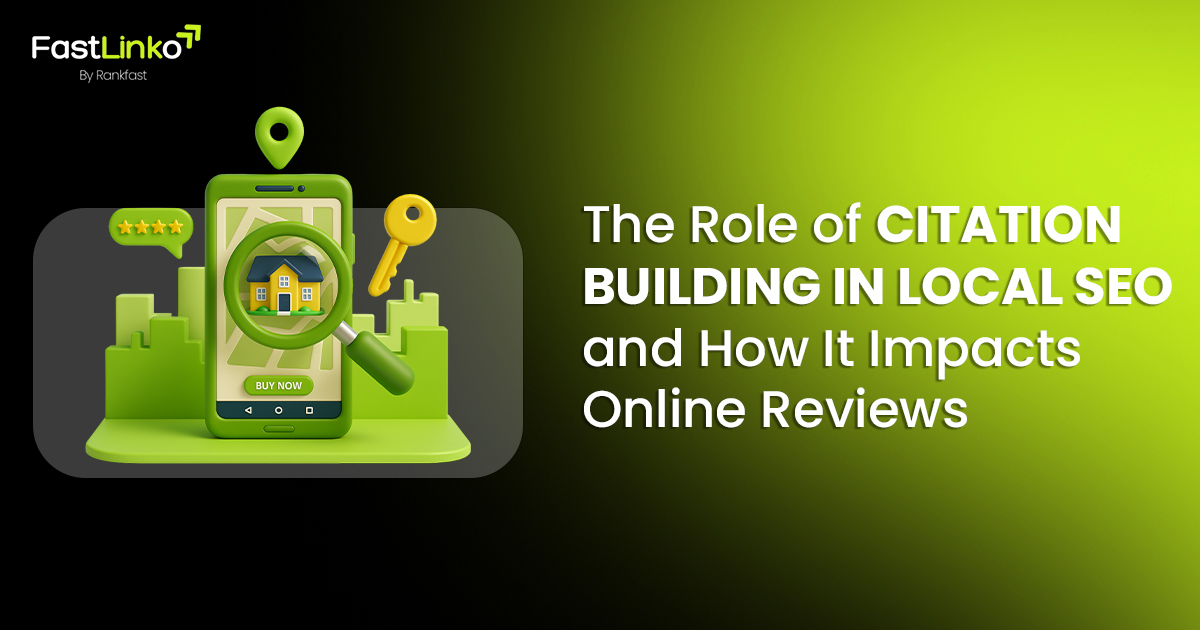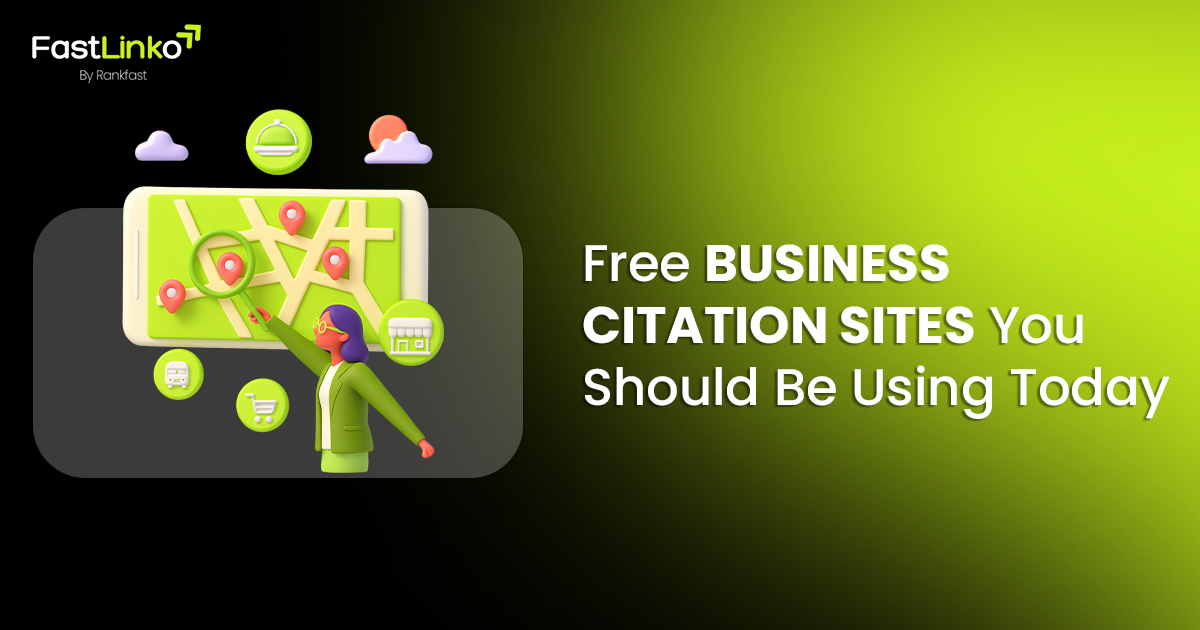Out of every 1,000 Google searches in the US, barely 360 clicks make it to the open web.
The rest?
They’re absorbed by Google itself, through snippets, maps, and AI answers, or they end without a click at all. In other words, over 60% of searches never even reach your website.
Now, imagine pouring time and money into publishing content without understanding how your audience actually finds and interacts with it. That’s like stepping into the fiercest arena of digital marketing, blindfolded. You may be writing, posting, and optimizing, but without data, you’re only guessing.
This is why forward-looking brands are shifting gears. They’re not just creating content to fill space; they’re using SEO content analytics to steer every word, keyword, and link. In a zero-click, AI-driven search world, analytics is the difference between a blog that ranks but goes unnoticed and one that pulls leads straight into your pipeline.
Our SEO content marketing services are designed to give your brand clarity, control, and measurable results. Because in today’s search ecosystem, visibility without conversions isn’t enough, your content must work harder, smarter, and directly for growth.
Why Data-Driven Content Is The New Standard
The way people discover and consume online content is shifting faster than ever. Traditional SEO alone no longer guarantees visibility, as user behavior, AI-driven search experiences, and platform algorithms constantly evolve.
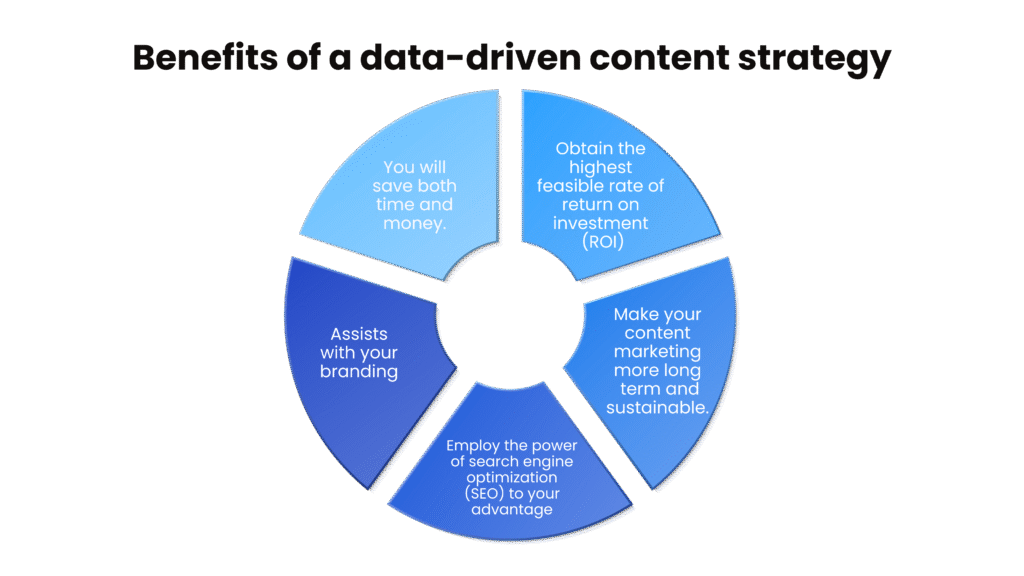
Relying on guesswork or outdated keyword tactics puts growth at risk. By leaning on SEO content analytics and data-backed insights, companies can uncover what actually drives engagement, conversions, and long-term pipeline impact. The numbers tell a clear story:
- Organic search still dominates: BrightEdge reports that organic search drives 53% of website traffic, more than paid search, social, and email combined.
- But visibility is shrinking: Zero-click searches and AI Overviews are pushing brands further down the SERP.
- AI referrals are exploding: AI platforms (ChatGPT, Gemini, Perplexity) sent over 1.1 billion visits in June 2025 alone, a 357% YoY increase.
In today’s environment, the old “publish and pray” approach to SEO no longer works. The most effective agencies are refining strategies with data-driven content marketing SEO, ensuring content reaches decision-makers and fuels measurable results..
The KPI Framework That Drives Smarter SEO Content
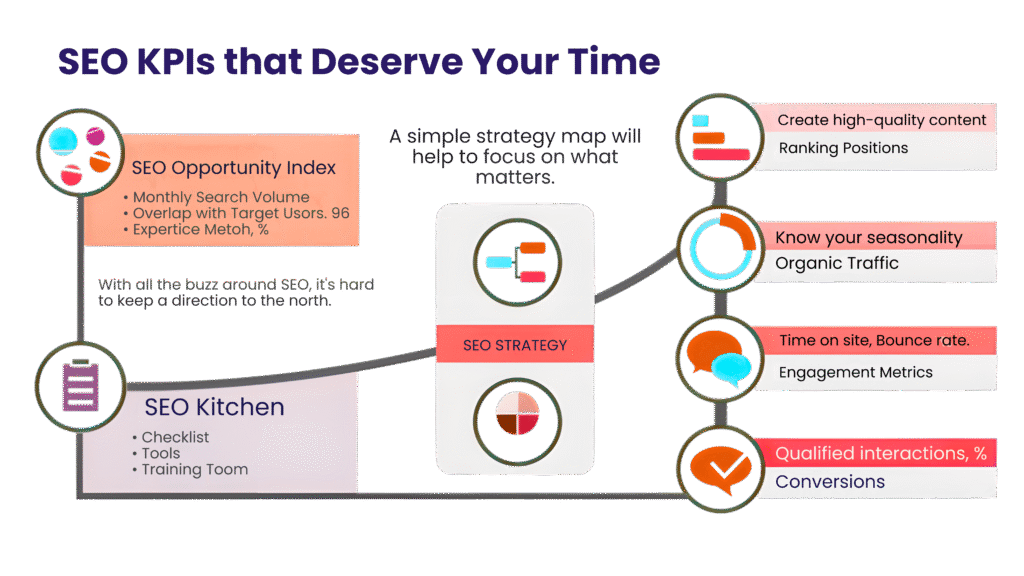
Leading content marketing companies know that SEO success isn’t about rankings alone; it’s about building measurable impact across multiple layers of performance. They define KPIs at four levels: visibility, engagement, conversion, and AI visibility.
Visibility shows how well your brand appears across search queries. Engagement measures how audiences interact with your content, through CTR, time on page, or scroll depth. Conversion ties it all back to business goals like leads, demo calls, or sign-ups. And now, AI visibility has entered the mix, tracking whether your brand gets featured in snippets, knowledge panels, or AI-driven search results.
Together, these KPIs ensure content strategies aren’t just ranking, but actively driving revenue and future-proofing search presence.
KPI Framework for Content Performance SEO
Measuring the success of content performance SEO goes far beyond tracking rankings. It requires a structured framework that connects visibility, engagement, and revenue impact while also adapting to shifts like zero-click searches and AI-driven results.
To make this practical, here’s a KPI-driven model that breaks down the core layers of measurement, explains why each matters, and outlines what actions teams should take to keep content performing consistently.
| Layer | Primary Metrics | Why it matters | What to do |
|---|---|---|---|
| Discoverability | Impressions, SERP features, AI citations | Shows if you’re being found | Optimize titles, schema, FAQs |
| Engagement | CTR, dwell time, scroll depth | Proves content resonates | Sharper hooks, tables, visuals |
| Conversion | Demo requests, form fills, influenced pipeline | Ties content to revenue | Add CTAs, case study blocks |
| Resilience | Zero-click share, AI Overviews presence | Protects against traffic loss | Add Q&As, structured answers |
| Authority | Links earned, updates, topical coverage | Signals expertise to engines | Publish original research, keep pages fresh |
The Analytics Stack: How Services Measure SEO Content Success
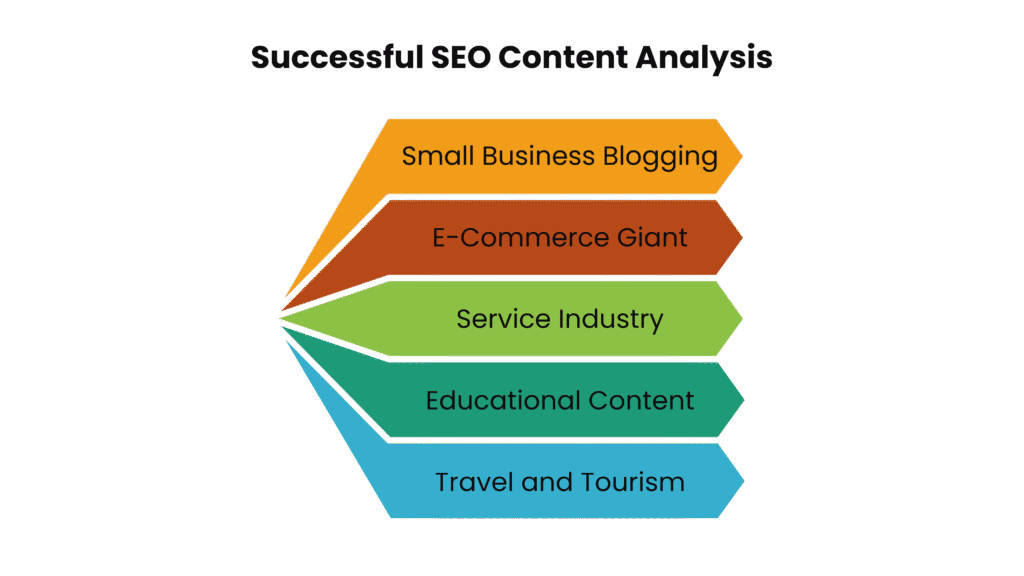
Tracking SEO content performance isn’t just about knowing how many people landed on a page, it’s about understanding how each touchpoint contributes to pipeline, authority, and long-term growth. That’s why agencies rely on a layered analytics stack, combining traditional SEO tools with AI visibility tracking to capture the full picture.
The following breakdown shows the tools, what to measure, and why these insights are essential for building and refining data-driven SEO content marketing strategies.
| Tool | What to track | Why it matters |
|---|---|---|
| GA4 & CRM | Sessions, assisted conversions, revenue | Connect content to sales, not just traffic |
| Search Console | Queries, CTR by position, coverage issues | Spot quick-win opportunities & declining assets |
| Ahrefs/Semrush | SERP features, cannibalization, competitor gaps | Prioritize where you can realistically win |
| Heatmaps | Scroll depth, clicks, form abandonment | Improve UX & CTA placement |
| AI Visibility Tools | Mentions in AI Overviews/Chatbots | Prepare for AEO (Answer Engine Optimization) |
How Data Analytics Shapes Modern SEO Content Marketing
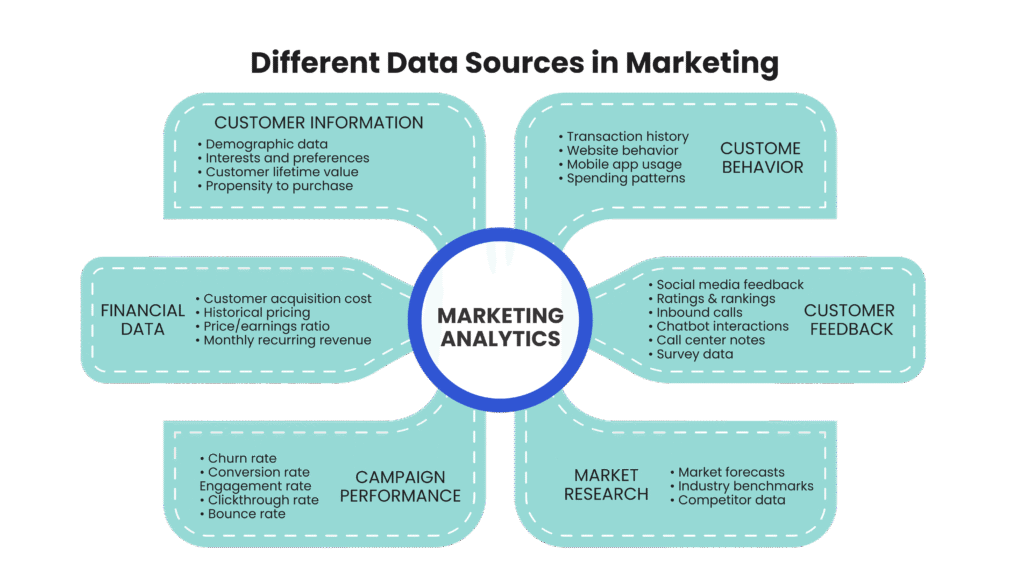
Modern SEO content marketing is no longer about publishing high volumes of content and hoping it ranks. Data analytics has reshaped the process into a more precise, insight-driven approach. Each stage of strategy now connects back to measurable signals—helping teams understand what audiences want, how search engines interpret relevance, and where content creates real business impact.
It all begins with understanding the audience and their demand patterns.
1. Audience & Demand Modeling
The foundation of any SEO content marketing strategy starts with truly understanding the audience. Instead of guessing what prospects might search for, leading agencies lean on historical query data, CRM records, and analytics dashboards.
Patterns in long-tail searches often reveal what buyers want at different funnel stages. For example, early-stage buyers may use exploratory phrases like “best project management software for remote teams,” while mid-funnel prospects lean toward comparison queries such as “Trello vs Monday pricing.” At the bottom of the funnel, the intent shifts toward “buy,” “demo,” or “case study” searches.
By mapping these patterns against real sales conversations, companies can prioritize content that resonates with decision-makers. The data not only uncovers new opportunities but also eliminates wasted effort on keywords that bring traffic without conversion.
2. SERP + AI Anatomy Analysis
The SERP is no longer just a list of ten blue links. With Google’s AI Overviews, featured snippets, FAQs, and People Also Ask boxes, the first page often answers a user’s question before they ever click through. That’s why agencies study the anatomy of SERPs and AI outputs in detail.
Which questions are being repeated? What type of answers are getting highlighted? Which formats, lists, tables, and how-to steps show up most often? By reverse-engineering these trends, content marketers can structure content to serve both human readers and AI-driven engines.
For example, including a concise definition paragraph at the top, followed by detailed sub-sections and structured data, improves the odds of winning both featured snippets and AI citations. B2B buyers, who often skim for precise details, benefit from this clarity, while search engines reward the structured format.
3. Content Creation with Optimization Data
Gone are the days of keyword stuffing or chasing vanity metrics. Today’s agencies use SEO content optimization data to guide their writing. They analyze click-through-rate (CTR) curves to see where users stop engaging, study heatmaps to identify drop-offs, and apply schema markup to help content surface in rich results.
Data might reveal, for example, that users bounce quickly after reading a dense paragraph. The solution? Breaking information into skimmable lists, adding visuals, or embedding a chart. Similarly, CTR data can highlight which title formats attract the most clicks in competitive niches.
Agencies also increase the chances of being cited by adding original tables, frameworks, and charts. A blog that includes a clear table comparing “SEO Content Analytics Tools: GA4 vs Semrush vs Ahrefs” is far more likely to be referenced in AI summaries or linked to by other publishers.
4. Distribution & Authority Building
Publishing great content is only half the equation. Distribution and authority signals determine whether that content ranks and drives traffic. That’s why leading agencies prioritize a multi-layered authority strategy:
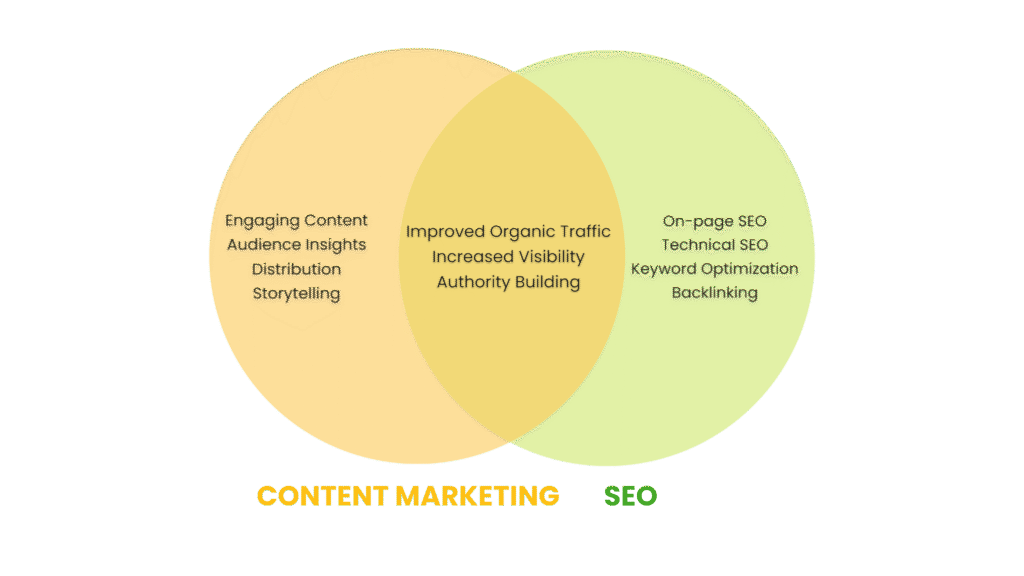
- Link Building Services to acquire high-quality, white-hat backlinks that strengthen domain authority.
- Guest Posting Services to expand reach, generate referral traffic, and build credibility within niche B2B industries.
These activities not only improve search visibility but also bring targeted visitors from external platforms where decision-makers already spend time.
5. Continuous Refinement
Unlike traditional campaigns, content-driven SEO is never “done.” Top agencies treat it as a living system that adapts to new search behaviors, competitor moves, and AI shifts.
Performance is monitored weekly across KPIs such as organic clicks, engagement depth, and conversion rates. Pages are updated every 30–60 days with new stats, refreshed examples, or additional FAQs that align with AI-driven queries. For instance, a blog written six months ago might now need to include “AI Overviews” data points or new competitor comparisons to stay relevant.
This ongoing refinement ensures that content doesn’t just attract traffic once but continues to build long-term value. In B2B, where buying cycles can stretch over months, this persistence keeps your brand visible across every stage of the funnel.
Together, these five pillars, audience modeling, SERP analysis, data-led creation, authority building, and continuous refinement, form the blueprint of how the best SEO content marketing services drive measurable growth. Agencies that invest in this data-driven discipline aren’t just generating clicks; they’re creating content that fuels conversations, opportunities, and revenue.
Example: Turning a “How-to” Blog Into a Pipeline Asset
A SaaS company ranked #4 for a high-intent query. Data showed:
- CTR was 11% (below average for position 4).
- High scroll drop-off after 25%.
- Weak demo CTA engagement.
Fixes applied:
- Rewrote meta/title for clarity.
- Added a 6-step checklist near the top.
- Embedded a short product walkthrough video.
- Included a 3-row comparison table.
Results after 90 days:
- CTR rose to 16%.
- Demo clicks more than doubled (0.7% → 1.6%).
- Influenced opportunities increased 54%.
Before vs After Snapshot
| Metric | Before | After (90 days) |
|---|---|---|
| Avg. Rank | 5.1 | 3.7 |
| CTR | 10.8% | 15.9% |
| Demo CTR | 0.7% | 1.6% |
| Pipeline Influenced | $34,000 | $52,000 |
B2B ROI: Why Data-Driven SEO Content Is Worth It
When businesses evaluate SEO investments, the conversation often shifts from rankings and clicks to real ROI. Decision-makers want proof that content strategies contribute to revenue, not just visibility. That’s where data-driven SEO stands out, it directly links content efforts to measurable financial outcomes. The numbers below highlight just how powerful this approach can be.
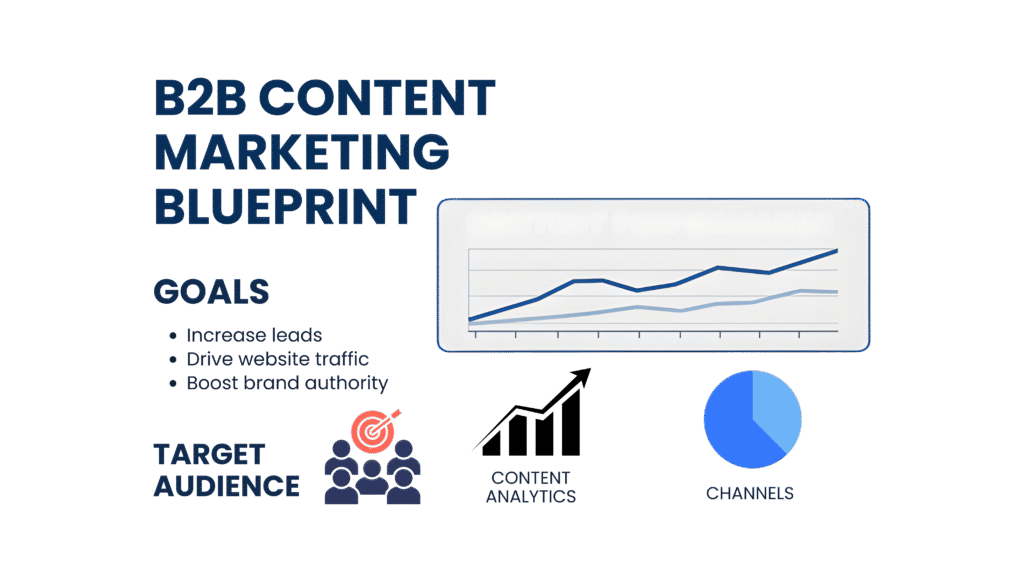
- B2B SaaS SEO delivers 702% ROI on average, with breakeven in just 7 months.
- 70% of marketers report SEO drives more sales than PPC.
- 46% of B2B marketers plan to increase content budgets in 2025.
This proves why analytics-driven SEO isn’t just about traffic; it’s about the pipeline.
Practical Playbook: 10 Data-Led Moves For B2B Content
Turning insights into action is where data-driven SEO content proves its value. It’s not enough to know that analytics matter,the real advantage comes from applying them consistently across strategy, creation, and measurement. The following playbook outlines 10 practical, data-led moves teams can apply to keep content competitive and revenue-focused.
- Map clusters to real buyer questions.
- Score keywords by Learn / Compare / Buy intent.
- Build hybrid pages optimized for SERP + AI answers.
- Add source-ready stat boxes near the top.
- Strengthen interlinking with Content Marketing Services hubs.
- Use schema markup and FAQs.
- Insert quick charts and checklists.
- Test CTAs, “Talk to an expert” works better for B2B than “Sign up.”
- Track zero-click exposure and AI citations.
- Refresh winners every 60 days.
Conclusion
Clicks are getting harder to win, but proving impact has never been easier if you build content on the foundation of analytics. The difference between content that simply ranks and content that drives business growth lies in how well it connects with measurable outcomes. By tracking the right KPIs, creating AI-ready assets, and aligning every piece of content with the buyer journey, SEO is no longer just about visibility; it’s about generating pipeline and revenue.
That’s where the right partner makes a difference. At Fastlinko, our Local Citation Building service and other data-driven SEO solutions are designed to close the gap between strategy and results. We don’t just chase rankings; we focus on building authority, improving search trust, and converting visibility into tangible growth. If your brand is serious about turning search into sales, we’re ready to make it happen.




